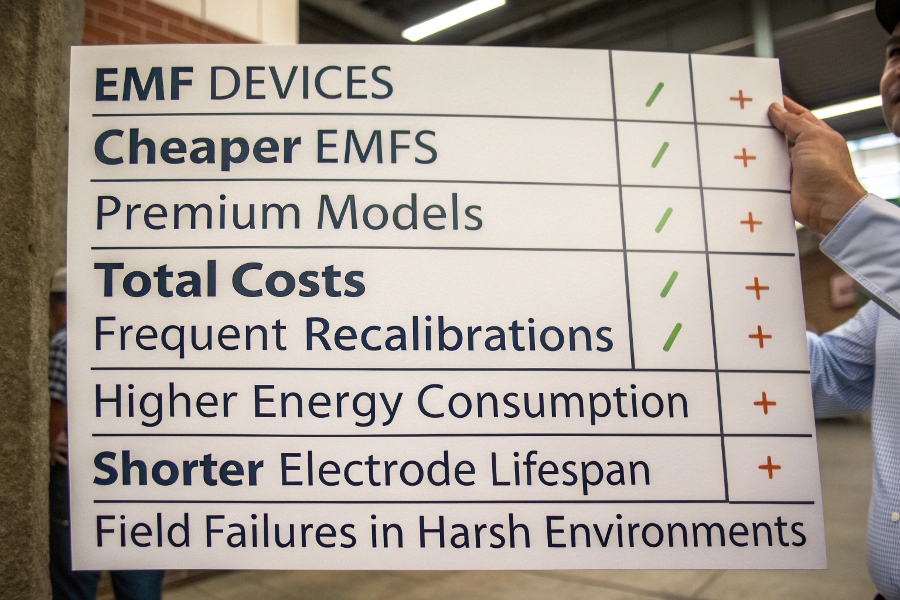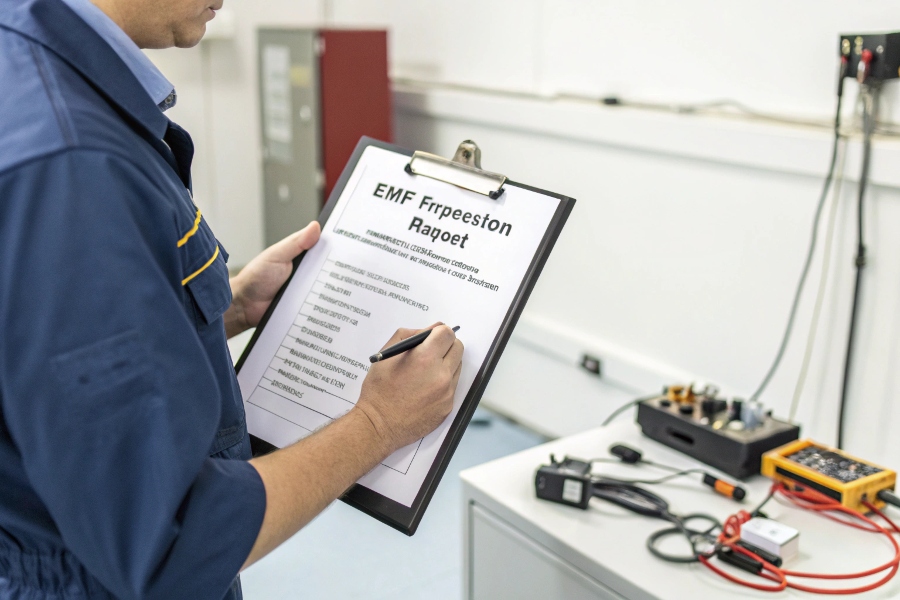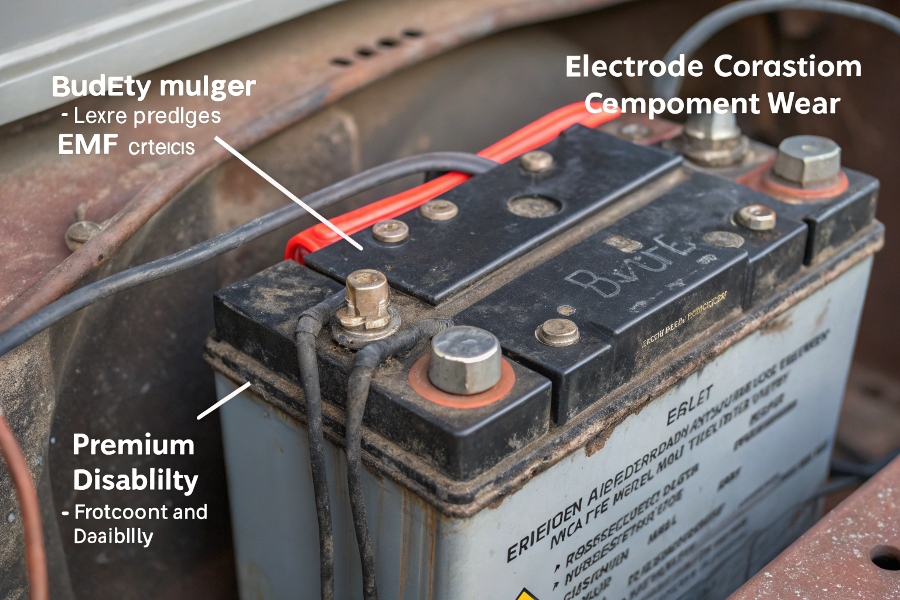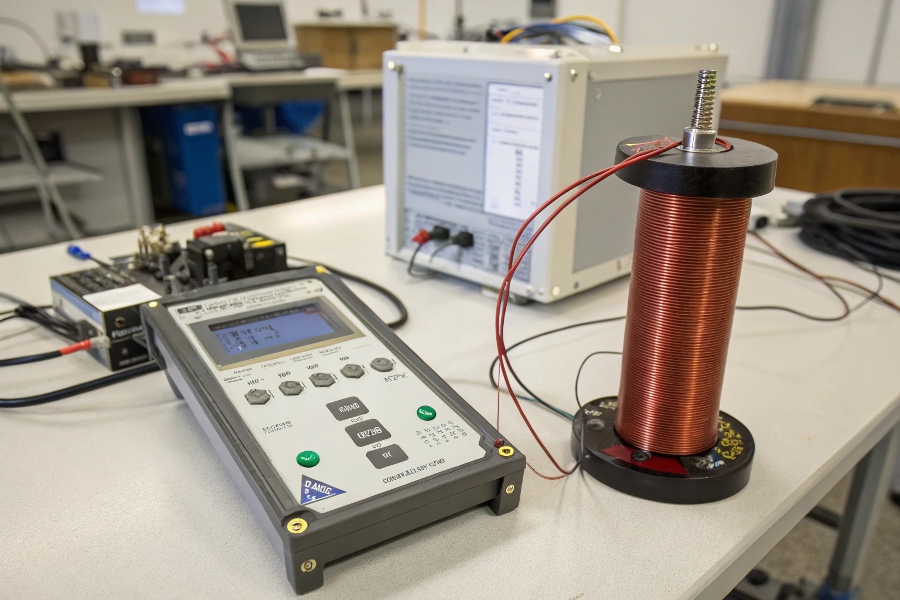Buying a $500 electromagnetic flow meter seems like a smart deal—until you discover the true operating costs.
While cheaper EMFs have lower upfront costs, they often incur 3-5× higher long-term expenses due to frequent recalibrations (±0.5% drift/year), higher energy consumption (50-100W vs 20W for premium models), and shorter electrode lifespan (2-3 years vs 10 years). Field failures in harsh environments often double these costs.

Total Cost
Let’s examine where budget EMFs actually become expensive.
How Much Does an EMF Inspection Cost?
Routine checks add up faster than you think.
Basic EMF inspection costs $200-500 per visit (2-4/year recommended). Full calibration runs $1000-2000 annually at accredited labs. Cheap EMFs need 3× more inspections due to unstable excitation currents and unshielded electronics that drift 0.3-0.8% monthly versus 0.1% for quality units.

Maintenance Costs
Breakdown of inspection activities:
Typical EMF Maintenance Tasks
| Task | Frequency | Cost | Cheap EMF Impact |
|---|---|---|---|
| Electrode Cleaning | Quarterly | $150 | Needs monthly |
| Grounding Check | Bi-annual | $200 | Fails often |
| Full Calibration | Annual | $1,200 | Every 6 months |
| Signal Verification | Monthly | $80 | Weekly needed |
| Cable Inspection | Annual | $300 | Replace yearly |
What Are the Cons of EMF?
Hidden drawbacks emerge in operation.
Budget EMFs suffer from unstable measurements (±2% vs ±0.5%), high maintenance (plates foul quickly), limited liner options (only PTFE), and poor overload protection. Their excitation circuits often overheat in continuous use, causing 3× faster electrode degradation1 than premium models with pulsed-DC technology.

Component Wear
Operational pain points:
Cheap vs Premium EMF Performance
-
Measurement Stability
- Budget: ±2% after 6 months
- Premium: ±0.5% over 5 years
-
Electrode Life
- Budget: 2-3 years
- Premium: 10+ years
-
Energy Use
- Budget: 80-100W
- Premium: 15-30W
-
Turndown Ratio
- Budget: 10:1
- Premium: 100:1
Why Is High EMF Bad?
Electrical interference ruins measurements.
Poorly designed EMFs generate excessive magnetic fields (50-100mG vs <10mG for quality units), causing signal noise that requires expensive shielded cables ($100/meter). High EMF also accelerates electrode polarization, causing 0.1-0.3% accuracy loss per month compared to 0.02% in low-EMF designs.

Signal Disruption
Effects of excessive EMF:
Consequences of High Magnetic Fields
-
Measurement Errors
- Added noise: ±1-3% variation
- Zero point drift
-
Equipment Impact
- Adjacent sensor interference
- Cable heating issues
-
Maintenance Burden
- Frequent recalibrations
- Ground loop troubleshooting
What Does mG Mean on an EMF Reader?
It measures magnetic field strength2.
mG (milligauss) quantifies magnetic flux density—1mG = 0.1 microtesla. Quality EMFs maintain <10mG at 1 meter distance through precise coil winding and shielding. Cheaper models often emit 30-100mG, requiring 3-5 meter clearance from other instruments to prevent interference.

Field Strength
Understanding mG levels:
EMF Radiation Levels Compared
| Source | Typical mG | Effect |
|---|---|---|
| Premium EMF | 1-5mG | No interference |
| Budget EMF | 20-100mG | Needs shielding |
| Household Wiring | 0.5-2mG | Negligible |
| Power Lines | 5-50mG | Avoid proximity |
Total Cost Analysis Over 10 Years
Premium EMFs save thousands:
| Cost Factor | Budget EMF | Premium EMF |
|---|---|---|
| Purchase Price | $500 | $5,000 |
| Install | $800 | $1,000 |
| Annual Maintenance | $3,200 | $500 |
| Energy Costs | $2,400 | $600 |
| Downtime Losses | $4,000 | $500 |
| 10-Year Total | $43,000 | $16,600 |
Conclusion
Cheap EMFs become expensive through hidden operation costs. Investing in quality electromagnetic flow meters cuts long-term expenses by 60% while improving measurement reliability and reducing downtime.
